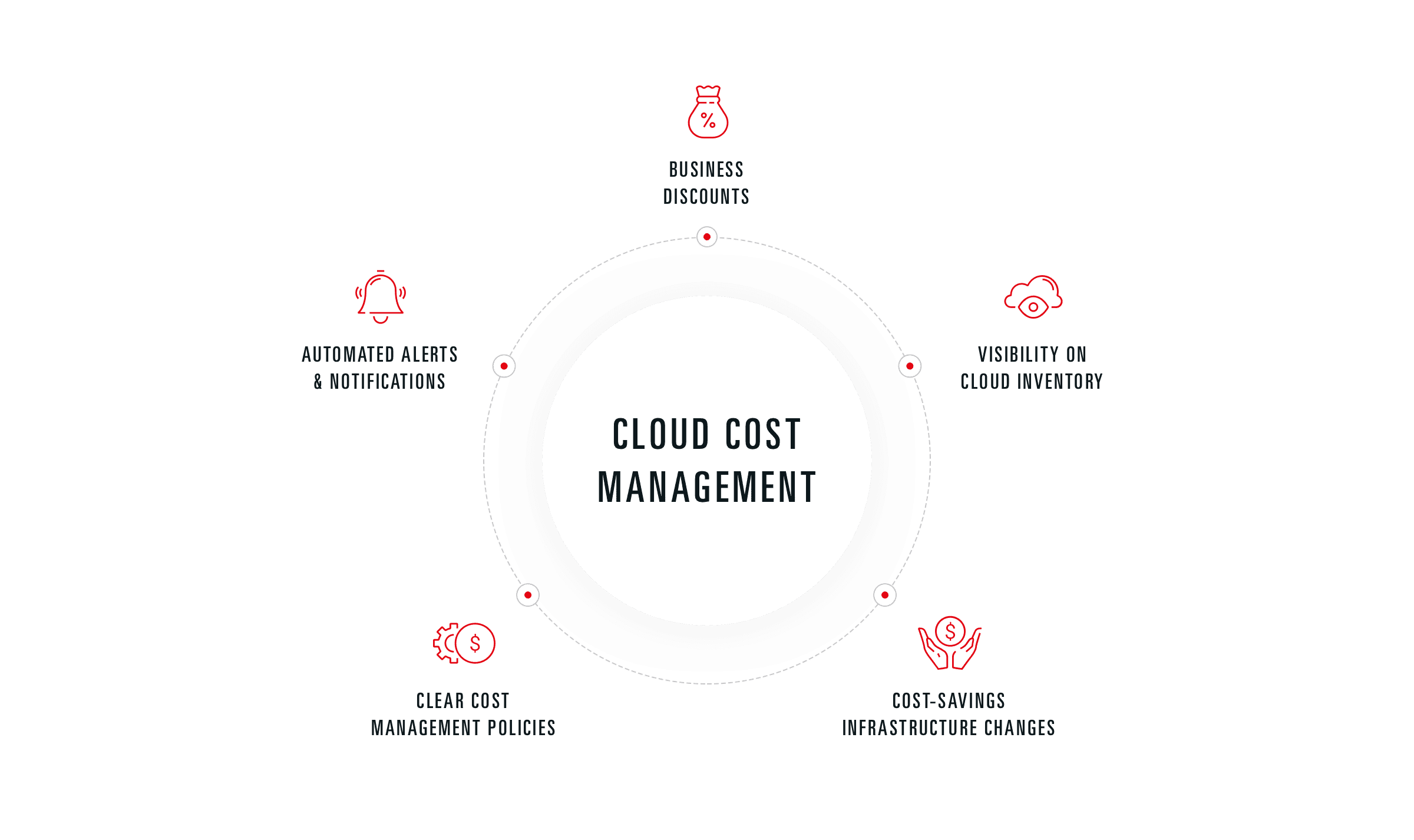Understanding Cost Management in Cloud Infrastructure
Introduction
Cloud infrastructure has revolutionized the way businesses operate by providing scalable and flexible computing resources. However, with the benefits of cloud computing come the challenges of managing costs effectively. In this blog post, we will explore the importance of cost management in cloud infrastructure and discuss strategies to optimize spending while maximizing performance and efficiency.
1. Choosing the Right Cloud Provider
When it comes to cost management in cloud infrastructure, selecting the right cloud provider is crucial. Different providers offer varying pricing models, so it’s essential to evaluate your requirements and compare pricing structures to find the most cost-effective option.
1.1 Pay-as-you-go vs. Reserved Instances
One of the key decisions to make is whether to opt for pay-as-you-go or reserved instances. Pay-as-you-go allows you to pay only for the resources you use, providing flexibility but potentially higher costs. On the other hand, reserved instances offer discounted rates for committing to a specific usage period, which can result in significant savings for long-term workloads.
1.2 Spot Instances
Spot instances are another cost-saving option provided by some cloud providers. These instances are available at significantly lower prices but can be interrupted if the demand for resources increases. Spot instances are ideal for non-critical workloads that can tolerate interruptions.
2. Right-sizing Resources
Optimizing costs in cloud infrastructure involves right-sizing resources to match your workload requirements. Overprovisioning resources can lead to unnecessary expenses, while underprovisioning can result in performance issues. Regularly monitor and analyze your resource utilization to identify opportunities for optimization.
2.1 Monitoring and Analytics Tools
Utilize monitoring and analytics tools provided by your cloud provider to gain insights into resource utilization. These tools can help identify idle or underutilized resources, allowing you to make informed decisions about resizing or terminating instances to reduce costs.
2.2 Auto Scaling
Implement auto scaling to dynamically adjust resources based on workload demands. Auto scaling ensures that you have the right amount of resources at any given time, preventing overprovisioning and reducing costs during periods of low demand.
Summary
Cloud infrastructure offers numerous advantages, including on-demand resource provisioning, increased agility, and reduced upfront costs. However, without proper cost management, organizations can quickly find themselves overspending and exceeding their budget. To avoid these pitfalls, it is crucial to understand the factors that contribute to cloud costs and implement effective cost management strategies.
One key aspect of cost management is monitoring and analyzing resource utilization. By tracking the usage of various cloud services and identifying any underutilized resources, businesses can make informed decisions about scaling up or down to optimize costs. Additionally, leveraging cost optimization tools and services provided by cloud providers can help identify potential savings opportunities.
Another important consideration is selecting the right pricing model for your cloud infrastructure. Cloud providers offer various pricing options, such as pay-as-you-go, reserved instances, and spot instances. Understanding the differences between these models and aligning them with your workload requirements can significantly impact your overall costs.
Furthermore, implementing automation and resource optimization techniques can help streamline operations and reduce unnecessary expenses. By automating tasks like resource provisioning and scaling, businesses can ensure efficient resource allocation and avoid overprovisioning, leading to cost savings.
In conclusion, cost management is a critical aspect of cloud infrastructure that should not be overlooked. By understanding the factors influencing costs and implementing effective strategies, businesses can optimize spending, maximize performance, and achieve long-te pop over here rm success in the cloud.

- Q: What is cost management in cloud infrastructure?
- A: Cost management in cloud infrastructure refers to the practice of monitoring and controlling expenses associated with using cloud services and resources. It involves optimizing resource allocation, identifying cost drivers, and implementing strategies to minimize costs.
- Q: Why is cost management important in cloud infrastructure?
- A: Cost management is important in cloud infrastructure to ensure efficient utilization of resources and to avoid unnecessary expenses. It helps organizations optimize their cloud spending, track usage patterns, and make informed decisions to reduce overall costs.
- Q: How can I control costs in cloud infrastructure?
- A: You can control costs in cloud infrastructure by implementing various strategies such as rightsizing instances, using reserved instances, leveraging spot instances, optimizing storage usage, automating resource management, and monitoring usage patterns to identify areas of improvement.
- Q: What are the benefits of effective cost management in cloud infrastructure?
- A: Effective cost management in cloud infrastructure leads to improved financial control, better budgeting, and cost predictability. It enables organizations to allocate resources efficiently, optimize spending, and achieve cost savings without compromising performance or scalability.
- Q: How can I monitor and track costs in cloud infrastructure?
- A: Cloud service providers offer cost management tools and dashboards that allow you to monitor and track costs in real-time. These tools provide detailed insights into resource usage, cost breakdowns, and recommendations for optimizing spending.
- Q: What are some common cost optimization techniques in cloud infrastructure?
- A: Common cost optimization techniques in cloud infrastructure include rightsizing instances to match workload requirements, using auto-scaling to dynamically adjust resources, leveraging serverless computing, implementing caching mechanisms, and regularly reviewing and optimizing resource allocation.

Hello, I’m Brayden Denman, a passionate and experienced Mobile App Developer specializing in Cloud Computing, Software Development, Mobile App Integration, and AI & Machine Learning. With a strong background in these fields, I strive to create innovative and user-friendly solutions that meet the ever-evolving needs of businesses and individuals.
Introduction Cloud infrastructure has revolutionized the way businesses operate by providing scalable and flexible computing resources. However, with the benefits of cloud computing come the challenges of managing costs effectively. In this blog post, we will explore the importance of cost management in cloud infrastructure and discuss strategies to optimize spending while maximizing performance and…

Hello, I’m Brayden Denman, a passionate and experienced Mobile App Developer specializing in Cloud Computing, Software Development, Mobile App Integration, and AI & Machine Learning. With a strong background in these fields, I strive to create innovative and user-friendly solutions that meet the ever-evolving needs of businesses and individuals. Read More.
Recent Posts
- Challenges in Cross-Platform Digital Asset Search and Retrieval
- The Role of AI in Enhancing Digital Asset Retrieval
- Implementing Automation in Digital Asset Recovery Processes
- Digital Asset Retrieval: Addressing Security and Privacy Concerns
- Optimizing Metadata for Quicker Digital Asset Discovery
- Overcoming Barriers in Searching and Accessing Digital Assets
- Best Practices for Efficient Digital Asset Retrieval
- Harnessing the Power of Deep Learning: A Beginner’s Guide
- Scalability Issues in Large-Scale Machine Learning Projects
- Navigating the Ethical Challenges of AI Implementations
